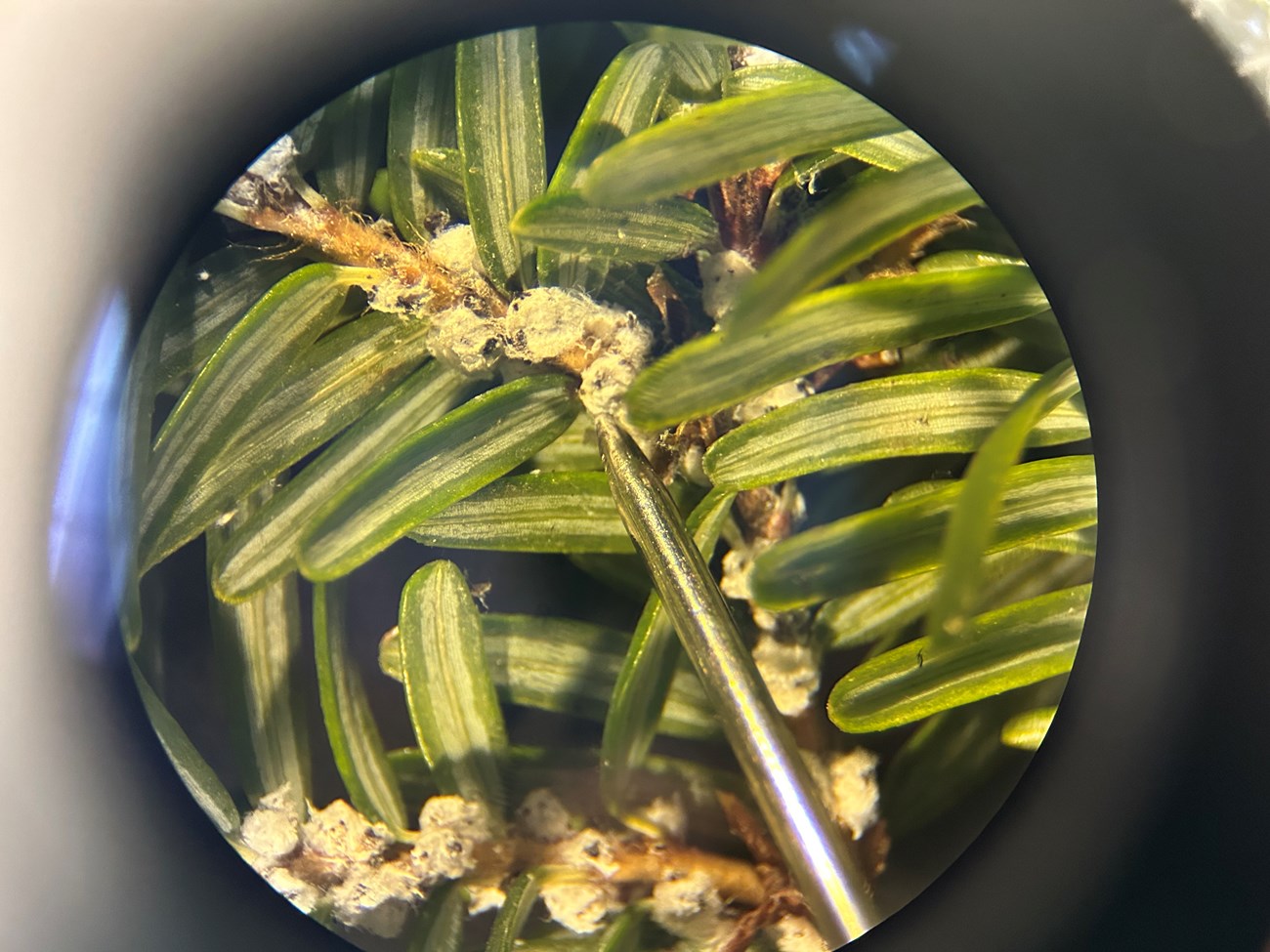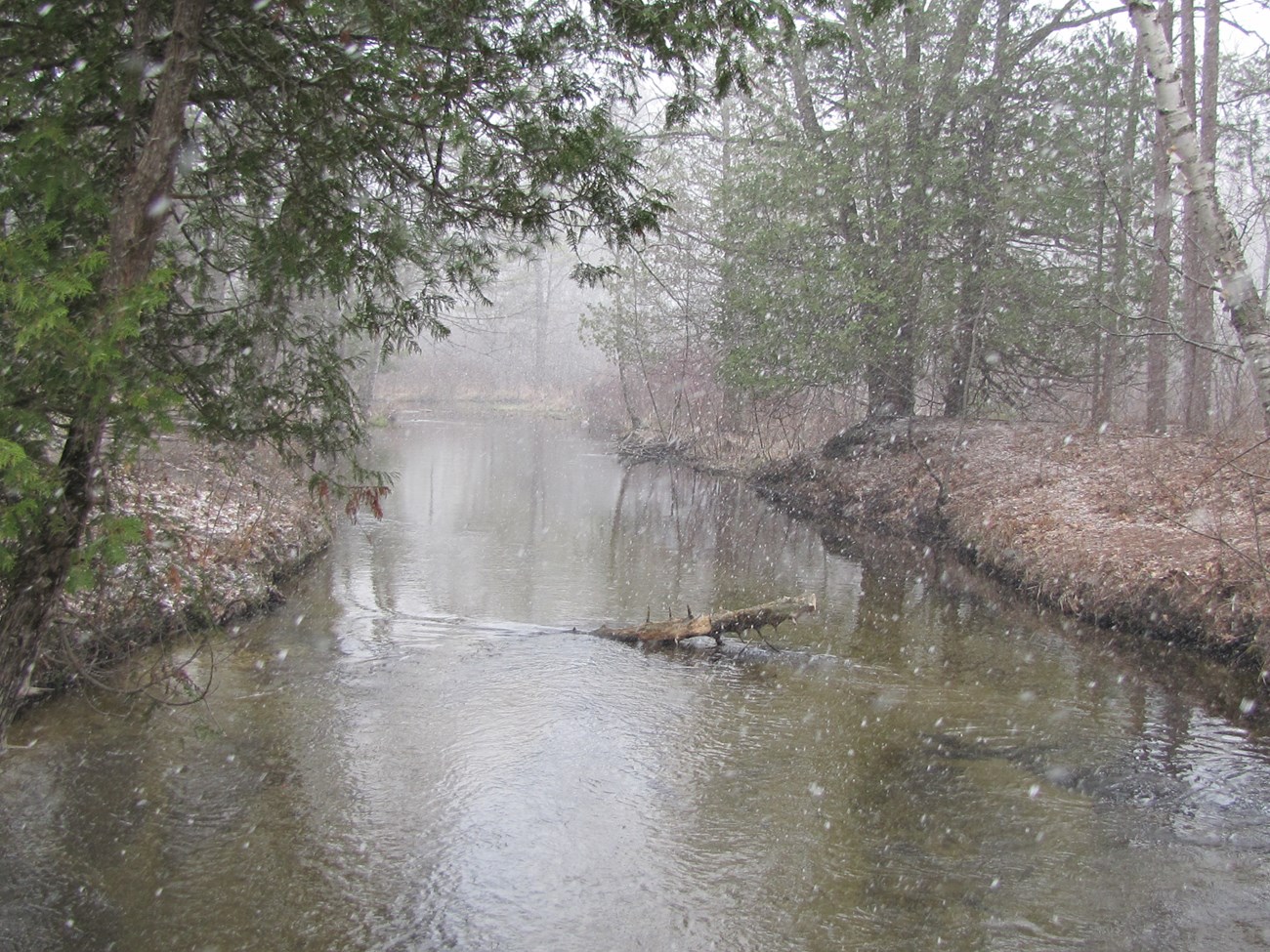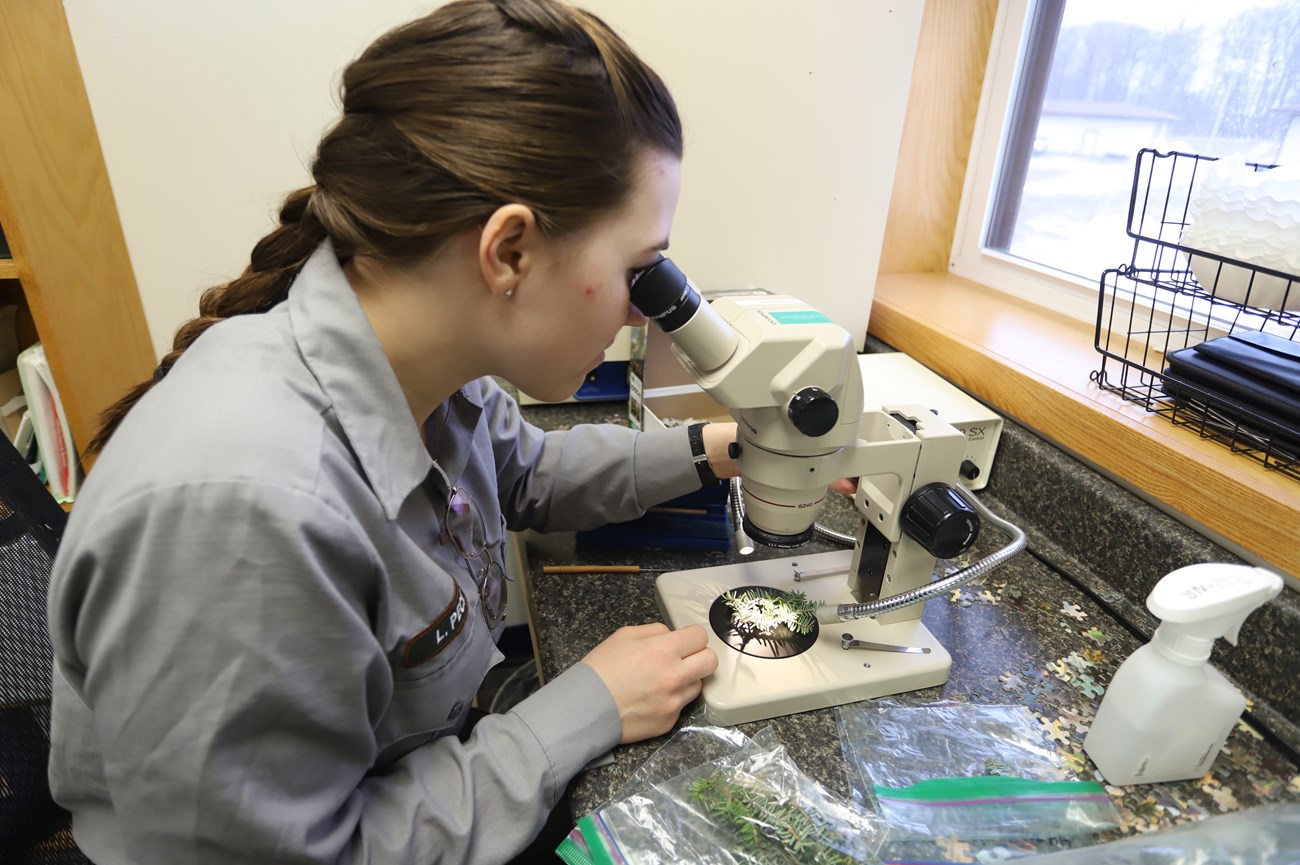Last updated: March 1, 2024
Article
Hemlock Woolly Adelgid

NPS Photo
In February 2024, the National Park Service and the Michigan Department of Natural Resources identified a hemlock woolly adelgid (HWA) outbreak in the Old Indian Trail area of Sleeping Bear Dunes National Lakeshore. HWA was found on over a dozen hemlock trees, with an additional 80 trees in the area that could also be infested.
This is the northernmost confirmed case of HWA in the state of Michigan. HWA can be moved from tree to tree by people, animals, and the wind. It is critical to limit the spread of HWA to other park areas or to the homes of park visitors.
Life Cycle of Hemlock Woolly Adelgid
The hemlock woolly adelgid (Adelges tsugae; HWA) is a small aphid-like insect native to Japan. After hatching, HWA enters its “crawler” stage. It grows by feeding on sap flowing through the new twigs and branches of hemlock trees. As adults, these insects become immobile. They lay their eggs within sacs that appear as white woolly clumps on the underside of the branches. By feeding on sap during the winter and early spring, HWA prevents hemlock trees from producing new needles during the summer. Without replacements for the old needles, the tree will eventually become unable to make food and it will die.
In the crawler stage, HWA is naturally spread from tree to tree by birds, mammals, and the wind. People and vehicles may also spread HWA as they brush against the branches of hemlock trees. It only takes one adult to cause an HWA outbreak, since a female can lay eggs that are clones of herself.
Origins of HWA
In their native habitat, HWA populations are controlled by their natural predators and by the resistance of their host trees. Unfortunately, hemlock trees in the eastern United States don’t have the same resistance. Since its accidental introduction in the 1950s, HWA has spread from Virginia to as far south as Georgia, and as far north as Maine. Some NPS sites in this range have reported a loss of 80-90% of their Eastern hemlock trees. HWA was first observed in Michigan in 2006, and the first infestation in the state was confirmed in 2015.

NPS Photo
Ecological Impacts
Michigan is home to over 170 million Eastern hemlock trees. These trees provide food, shade, and cover for many species of birds and mammals. They are especially important resources during the spring before other plants have grown back their leaves. Eastern hemlock trees often grow around freshwater rivers and streams. In these areas, their shallow roots help to stabilize the soil and limit erosion. The shade from their needles also regulates snowmelt and keeps water temperatures cool enough for animals like fish and aquatic invertebrates.
Within Sleeping Bear Dunes, 30,431 acres of forest are at risk from HWA infestation. This makes up 65% of all forest habitats in the park. In particular, forests in the Crystal River watershed are a high priority for protection against HWA. Without intervention, HWA could have devastating effects for species that depend on Eastern hemlock trees.

NPS Photo
Managing HWA
In order to treat HWA infestations, park scientists first have to know where HWA is. By surveying forest sites, they can determine which areas are affected and how these sites will respond to treatment. These surveys usually take place when HWA is least mobile. Crawlers are not easy to look for, since they are only about the size of a single pepper flake at this stage. Winter is the ideal survey season, since the white egg cases stand out on the branches, and the immobile adults are not likely to be spread to other trees.
Once an infestation is confirmed, the hemlock trees are treated with pesticides that are injected directly into the sap. HWA are killed as they drink the pesticides in the sap. Only about 2 mL of pesticide is used per injection, so there is no impact to the tree. This direct method also prevents harm to surrounding plants. These pesticide treatments are effective for 4-5 years.
In addition to the treatment, park scientists are also careful to minimize spread. They clean equipment, including clothing and vehicles, after working in infested areas. They may also close trails in infested areas during the months with higher spread risk. To learn how you can help minimize spread of HWA, see below:
How You Can Help
-
Stop the spread of HWA by obeying trail closures, staying on trails, and cleaning your clothes and hiking equipment (including your vehicle) with soap and water after a hike.
-
Learn how to identify Eastern hemlock trees and hemlock woolly adelgid.
-
If you believe you found HWA within Sleeping Bear Dunes, please send us a picture along with GPS coordinates.
-
For sightings of HWA outside of Sleeping Bear Dunes, contact the Northwest Michigan Invasive Species Network.
